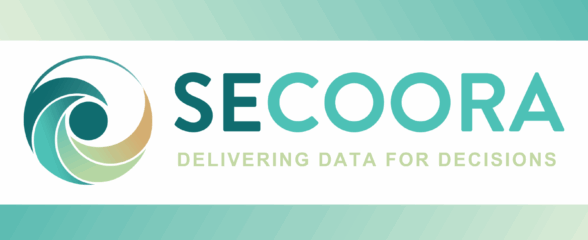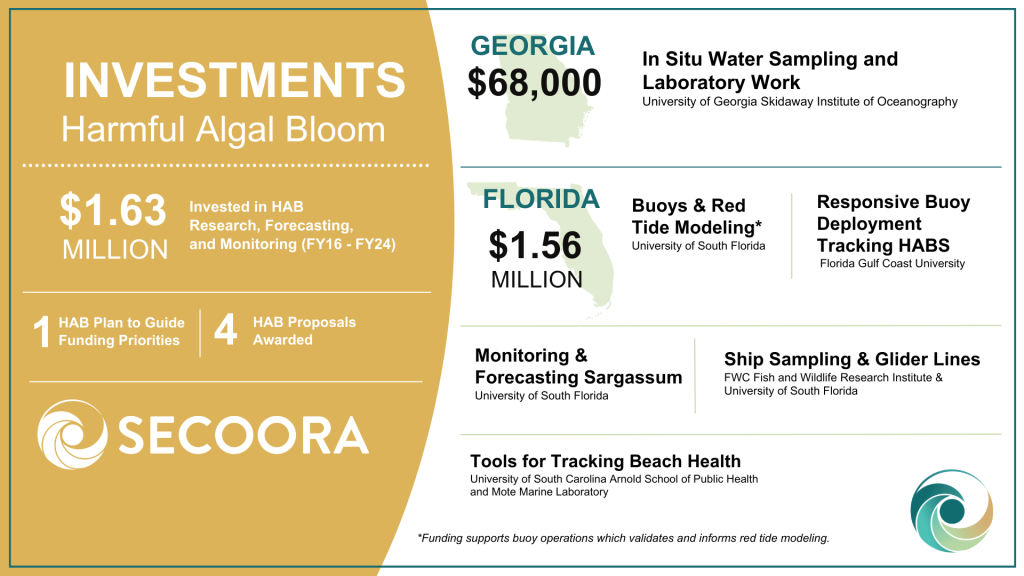SECOORA is delighted to announce the release of the Harmful Algal Bloom Plan 2.0. This updated plan builds upon the successes and lessons learned from its predecessor – taking into account advancements in technology, research, investments, and stakeholder engagement.
The new version overviews the mounting problem of Sargassum mats washing ashore in the Southeast U.S., Gulf of Mexico, and Caribbean islands. The Sargassum Watch System (SaWS), developed by Dr. Chuanmin Hu and his team at the University of South Florida, is a tool to forecast and monitor Sargassum trajectory and location. SECOORA provides funding to Dr. Hu to improve his high-resolution imagery products to allow for local beach monitoring.
A new graphic highlights our HAB investments by state, incorporating our new projects in Florida and Georgia. SECOORA partners employ a wide range of methods and technologies (buoys, gliders, and ship-based field surveys, as well as satellite remote sensing) to observe and monitor HABs.
The Harmful Algal Bloom Plan 2.0 serves as a strategic guide, outlining a collaborative vision that will guide future investments, foster innovation, and strengthen partnerships to address the challenges posed by HABs in the SECOORA region.
Click here to view a PDF of the plan. The HAB plan is an addendums to the Regional Coastal Ocean Observing System Strategic Operational (RCOOS).
Related news

Plankton Perfect: Using Imagery to Document Microscopic Marine Life
Dr. Enrique Montes is working to understand how plankton respond to changes in the ocean by capturing high resolution imagery with advanced technology. This work is funded by the Marine Biodiversity Observation Network (MBON) to use novel techniques like the Continuous Particle Imaging and Classification System (CPICS).

SECOORA Community Spotlight: Craig Harris
When Craig Harris signed on as the Emergency Management and Resiliency Coordinator for the city of Wilmington, North Carolina, he brought with him knowledge of water level sensors. SECOORA worked with Craig to install a water level sensor at the Love Grove Bridge in Wilmington, a site prone to flooding.

SECOORA Funding Opportunity Announcement: Letters of Intent Solicitation
SECOORA will submit a coordinated regional proposal in response to the anticipated FY 2026 Implementation of the U.S. Integrated Ocean Observing System (IOOS) funding opportunity. Letters of Intent to be considered for inclusion in SECOORA’s full proposal are due September 9, 2025.
